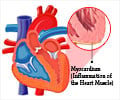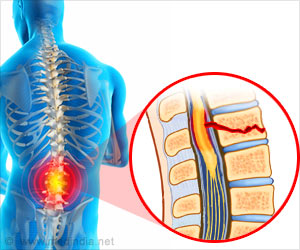Menstrual cycle length could be a marker for future heart health, which can help in identifying women who are at greater or lesser risk of developing heart disease after menopause.
- Women who had an increase in cycle length five years before reaching menopause were at higher risk of heart disease
- High estrogen levels can help protect the heart in young women with short cycles
- Changes in menstrual cycle length can help doctors predict who may be at risk of heart disease
“Cardiovascular disease is the No. 1 killer of women, and the risk significantly increases after midlife, which is why we think that menopause could contribute to this disease,” said lead author Samar El Khoudary, Ph.D., associate professor of epidemiology at Pitt’s Graduate School of Public Health.
“Menopause is not just a click of a button. It’s a multistage transition where women experience many changes that could put them at higher risk for cardiovascular disease. Change in cycle length, which is linked to hormone levels, is a simple metric that might tell us who is more at risk.”
The average duration of a menstrual cycle is about 28 days, but this can vary widely among women. Those with frequent short cycles spend more time with high estrogen levels compared to those with fewer long cycles, and this variation in hormone levels could explain why long and irregular cycles during reproductive years have been linked with cardiovascular disease, breast cancer, osteoporosis and other conditions.
El Khoudary and her team wondered if changes in cycle length during the menopause transition could also predict future cardiovascular health. To answer this question, the researchers analyzed data from 428 participants enrolled in the ongoing Study of Women’s Health Across the Nation.
The researchers collected menstrual cycle data throughout the menopause transition, and they assessed cardiovascular risk after menopause by measuring arterial stiffness or artery thickness.
About 62% of participants had stable cycles that didn’t change appreciably before menopause, whereas about 16% and 22% experienced an early or late increase, defined as an increase in cycle length five years or two years before their final menstrual period, respectively.
Compared to women with stable cycles, those in the late increase group had significantly more favorable measures of artery hardness and thickness, indicating a smaller risk of cardiovascular disease. Women in the early increase group had the poorest measures of artery health.
“These findings are important because they show that we cannot treat women as one group: Women have different menstrual cycle trajectories over the menopause transition, and this trajectory seems to be a marker of vascular health,” said El Khoudary.
“This information adds to the toolkit that we are developing for clinicians who care for women in midlife to assess cardiovascular disease risk and brings us closer to personalizing prevention strategies.”
The researchers hypothesize that menstrual cycle trajectories during menopause reflect hormone levels, which in turn contribute to cardiovascular health. In future work, they plan to assess hormone changes to test this hypothesis.
According to El Khoudary, it’s not clear why cardiovascular disease risk was higher in participants with stable cycles compared with the late increase group. Although research suggests that high estrogen may protect the heart in young women with short cycles, this hormone may be less protective in older age.
El Khoudary also wants to explore whether menstrual cycle patterns are linked to other cardiovascular risk factors such as abdominal fat, which she previously found to be associated with heart disease risk in menopausal women.
Source-Eurekalert
















